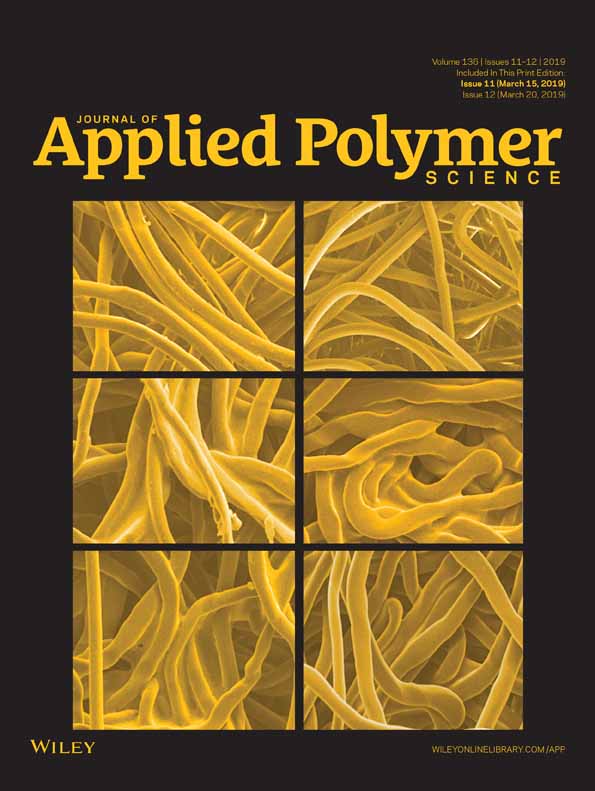Effect of fatigue loading on wicking properties of polyamide 66 nanofiber yarns
ABSTRACT
The wicking phenomenon is of prime importance with regards to biomedical applications of nanofiber yarns such as suture yarns and tissue scaffolds. In such applications, the yarns are usually subjected to cyclic tensile forces and biological tensile stresses. There is a lack of science behind the effect of fatigue on wicking properties of nanofiber yarns and this work aims at exploring this venue. Wicking properties of polyamide 66 nanofiber yarns are investigated by tracing the color change in the yarn structure resulting from pH changes during the capillary rise of distilled water. Results show that applying cyclic loading increases equilibrium wicking height in the Lucus–Washburn equation, which is attributed to changes in the overall pore structure in the cyclic loaded yarn. The likely causes of these changes are studied by scanning electron microscope, which reveals disentangled, more or less aligned and parallel nanofibers with a smaller radius in the nanofibrous structure. © 2018 Wiley Periodicals, Inc. J. Appl. Polym. Sci. 2019, 136, 47206.




